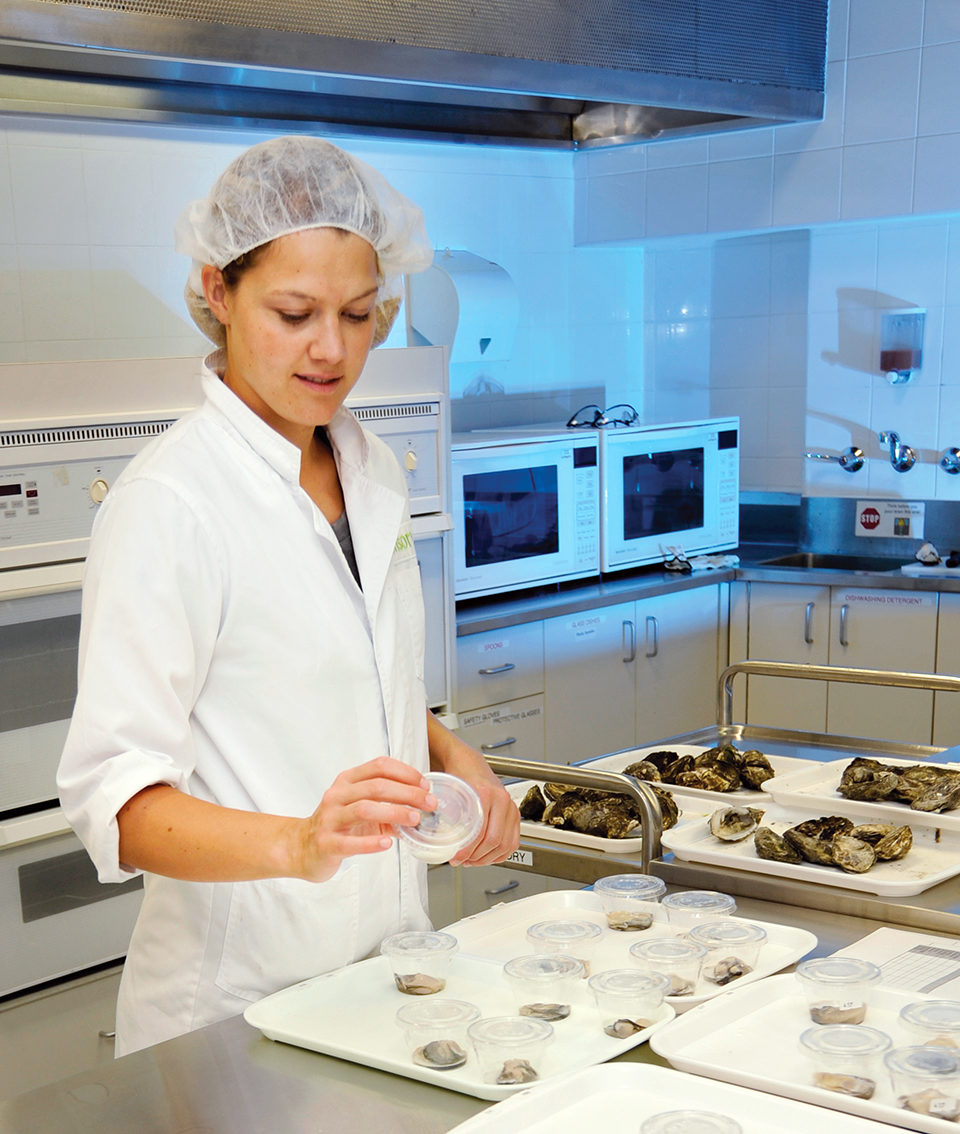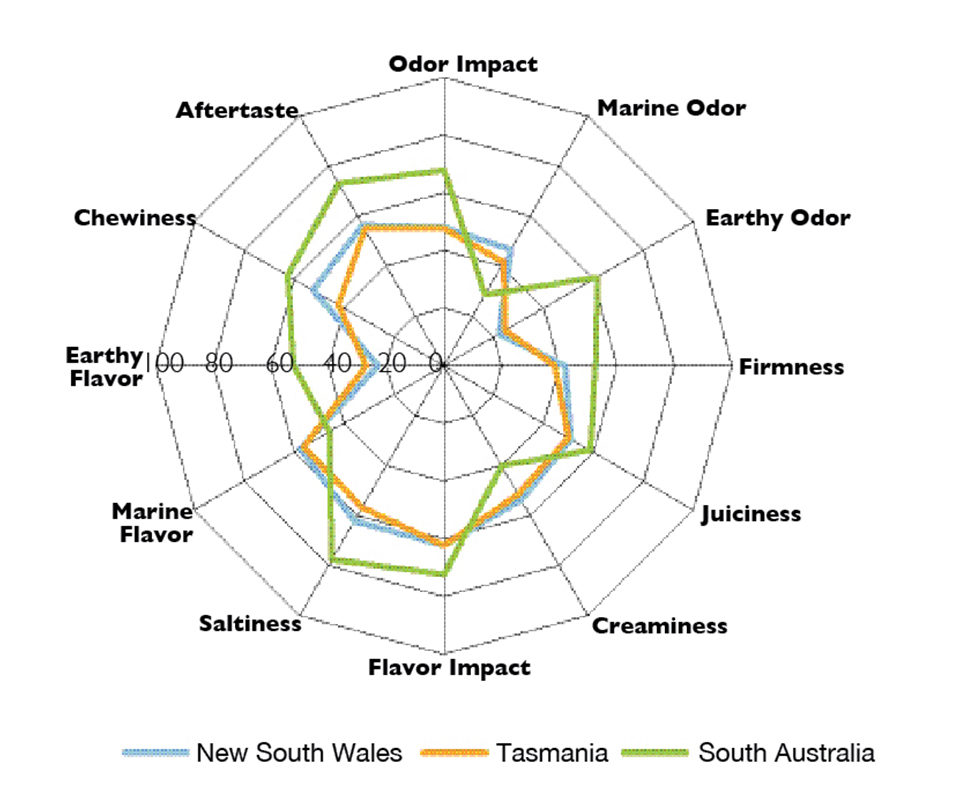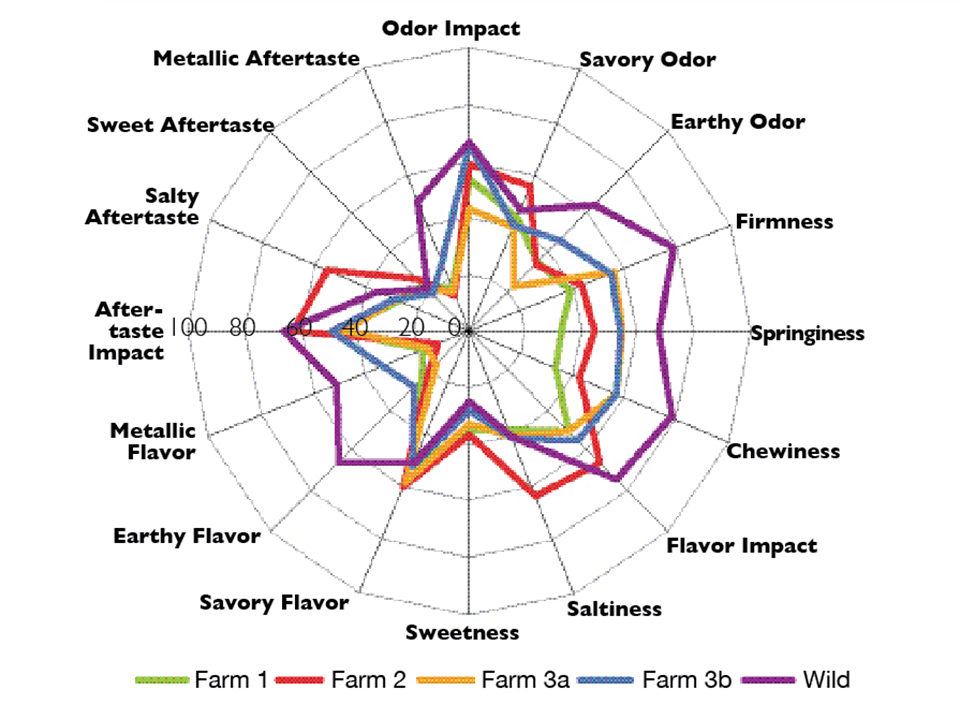Results demonstrate ability to differentiate among regions, farms and growing conditions

Sensory evaluation is a scientific approach to the measurement and analysis of how food and beverage products stimulate our senses. It is used routinely to guide food product research and development, production, manufacture and handling, and quality control.
Information on the sensory properties of food and beverages can be related to differences in their chemical and physical compositions. The sensory differences also can be related to differences in consumer preference, offering insight on what drives product acceptance.
Seafood evaluation

A pilot study on the sensory properties of Pacific oysters and abalone was conducted at the CSIRO Sensory Laboratory in Sydney, Australia, by a team of scientists from CSIRO Food and Nutritional Sciences. It found differences among the sensory properties of samples produced in different growing conditions and regions.
The pilot study began by establishing protocols for the preparation and tasting of the oysters and abalone, as well as a sensory evaluation vocabulary for odor, texture, flavor and aftertaste for each product. Once consensus was reached, the samples underwent an objective sensory assessment by a panel of 10 trained assessors, whose role was to quantitatively rate the perceptual differences among the samples.
The preparation protocols set guidelines for thawing, shucking, washing, steaming for abalone and plating. The tasting protocols ensured panel members applied a consistent approach to sniffing, biting and chewing the food samples during the evaluation.
To find meaningful perceptual differences, the samples were sourced from three regions of Australia. They were not meant to represent a robust regional comparison. The samples of Pacific oysters were sourced from farms in New South Wales, Tasmania and South Australia. The abalone came from farms in South Australia, Tasmania and Victoria, and wild harvest in Tasmania.
Differences perceived
The evaluation results demonstrated the ability of sensory testing to differentiate among regions, farms and growing conditions for both oysters and abalone.
All 12 of the attributes measured in oysters showed significant differences related to growing regions (Fig. 1). In addition, the abalone samples differed according to growing and harvesting conditions. The larger, wild-harvested abalone were perceived as having greater chewiness, firmness and springiness than farmed abalone, and containing higher levels of earthy and metallic flavors.

Farming systems and diets also influenced the sensory properties of farmed abalone samples, as shown in Figure 2. For example, abalone from one farm was called significantly more savory and salty. The panel was also able to significantly differentiate abalone of the same cohort but on different diets at one farm.

The differences in sensory attributes of the oysters and abalone did not reflect consumer preference or acceptance, but rather a quantifiable and repeatable distinction in sensory attributes reflecting biological and environmental differences.
Quantifying quality
Laboratory-based biochemical and physical analyses of the Pacific oyster and abalone samples were compared with the sensory data. Batch differences in the content of moisture, glycogen and specific taste-active free amino acids were found, and it is likely these contributed to the measured sensory differences.
Additionally, analyses of samples using near-infrared reflectance spectroscopy demonstrated the products could be discriminated by spectral difference related to compositional and physical properties. This latter technique is being developed further in parallel studies to provide accurate and rapid predictions of moisture, glycogen, protein and fat content in oysters that provide a valuable supporting tool for ongoing sensory studies.
Sensory/physical links
Future research aims to provide better linkage among the sensory data and the biochemical and physical data, so the information can be related back to growing, harvesting or processing conditions. This could potentially confirm anecdotal beliefs about product quality and the potential changes experienced during growout and through to market.
Sensory evaluation can also be used in association with consumer preference testing to understand the needs of different markets and guide product quality and development.
The research now needs industry direction from growers, harvesters and processors. Ultimately it will lead to the identification of quality indices that can be applied to improve product quality.
(Editor’s Note: This article was originally published in the November/December 2010 print edition of the Global Aquaculture Advocate.)
Now that you've finished reading the article ...
… we hope you’ll consider supporting our mission to document the evolution of the global aquaculture industry and share our vast network of contributors’ expansive knowledge every week.
By becoming a Global Seafood Alliance member, you’re ensuring that all of the pre-competitive work we do through member benefits, resources and events can continue. Individual membership costs just $50 a year. GSA individual and corporate members receive complimentary access to a series of GOAL virtual events beginning in April. Join now.
Not a GSA member? Join us.
Authors
-
Nick Elliott
CSIRO Food Futures Flagship
CSIRO Marine and Atmospheric Research
GPO Box 1538, Hobart
Tasmania 7001 Australia -
Conor Delahunty
CSIRO Food Futures Flagship
CSIRO Food and Nutritional Sciences
North Ryde, New South Wales, Australia -
Ciarán Forde
CSIRO Food Futures Flagship
CSIRO Food and Nutritional Sciences
North Ryde, New South Wales, Australia -
Maeva Cochet
CSIRO Food Futures Flagship
CSIRO Food and Nutritional Sciences
North Ryde, New South Wales, Australia -
Peter Kube
CSIRO Food Futures Flagship
CSIRO Marine and Atmospheric Research
Hobart, Tasmania, Australia
Tagged With
Related Posts

Health & Welfare
New approaches can help ensure safety of raw farmed oysters
Practical post-harvest oyster processing methods are needed. Preliminary studies evaluated the potential of high-salinity relaying to control Vibrio levels in raw oysters.

Health & Welfare
Diets affect abalone meat quality, shell color
A preliminary study investigated the effects of diet on the meat quality and shell color of Pacific abalone. A test diet and a commercial abalone feed resulted in lower meat protein content compared to that achieved with a diet of Pacific dulse seaweed. The artificial diets also caused the abalone to have yellow or orange shells. The seaweed diet alone resulted in abalone with dark-brown shells. However, a combination of seaweed and either artificial diet improved abalone growth, meat quality and shell color.

Health & Welfare
Artificial upwelling maintains favorable summer environment for farmed oysters
The summer season poses threats for oyster aquaculture worldwide. In addition to high mortality, poor oyster quality and health – especially in enclosed bays – are often attributed to water stratification, high temperatures and hypoxia.

Responsibility
In South Africa, abalone farming goes for gold
Poaching has plagued South Africa’s abalone to the point of decimation. Aquaculture is putting the shellfish back in the water, and back on menus.


